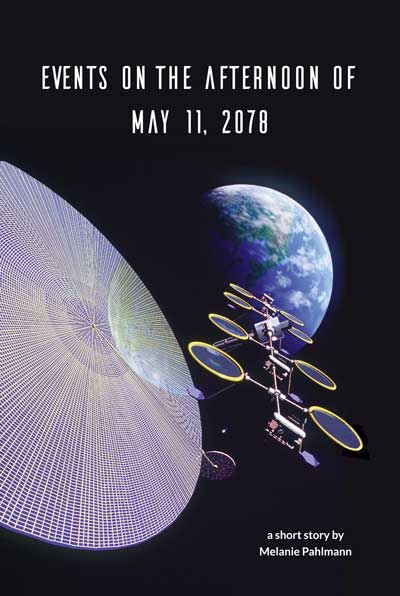
Short Story
Events on the Afternoon of May 11, 2078
Decades from now, solar panels will hover 200 miles overhead in near-Earth orbit. There they will capture enormous amounts of energy from the sun and transmit it to array fields across the world, such as the one outside Atlanta, Georgia, where this story takes place.
On the afternoon of May 11, 2078, there really will be a total solar eclipse of the sun in Atlanta. The rest of the events in this story are speculative fiction.
The Reality of Space-Based Solar Power
Collecting solar power in space was first considered in the 1970’s in response to the energy crisis precipitated by the Arab oil embargo. Back then, global warming and the environmental impact of fossil fuels were not the driving motivation for research into space-based solar power. Rather, it was the fantastic prospect of harvesting a potentially infinite amount of energy from the sun 24/7 in real-time without interruption. The advantages of collecting solar power in space are two-fold:
Absolute Zero
In absolute zero — the temperature of outer space — molecules cease to move and there is no real measurable heat. The extremely cold temperature creates superconductivity, which means electricity moves through any conducting medium with no resistance. This creates the perfect condition for solar cells to produce electricity with maximum efficiency.
No Atmosphere
In outer space there is no atmosphere, which means there are no clouds that can obscure sunshine. Additionally, the strength of the sun’s energy is much stronger in space since there is no protective atmosphere to shield the solar cells from solar radiation. This is why most Earth-orbit satellites are solar-powered. A small amount of solar cells can produce all the energy the satellites need. The best example of this is the International Space Station, which is 100% solar powered. If the Sun is always shining at a constant, unmitigated rate, and if solar energy is collected in an absolute vacuum at absolute zero, this combination allows for a continuous supply of solar energy uninterrupted by the sun’s position in the sky and flowing through super-cooled superconductors that provide the highest efficiency.